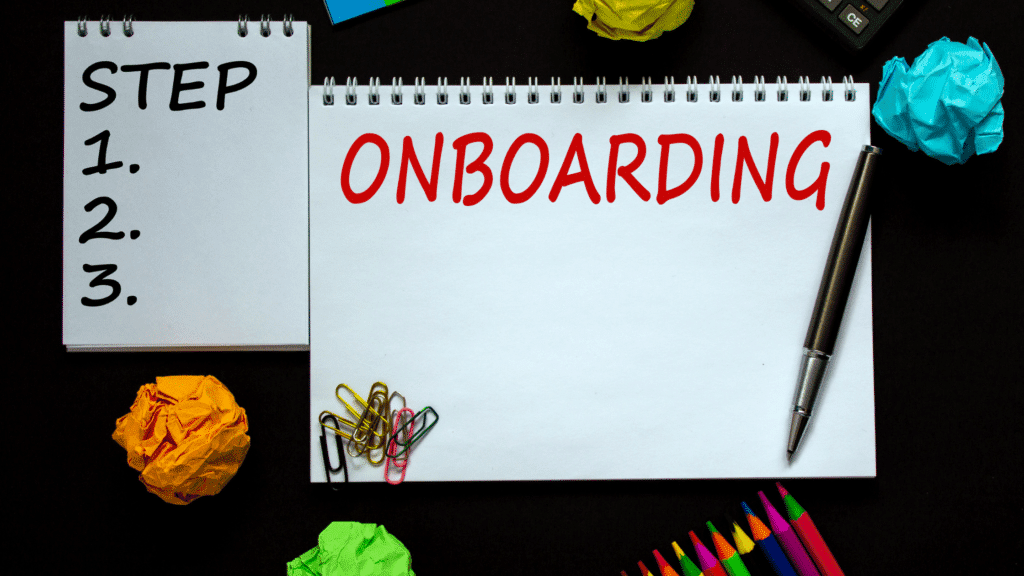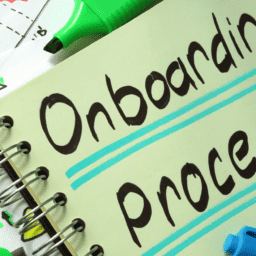Effective onboarding is the cornerstone of a successful employee integration process. When organizations prioritize a comprehensive and engaging onboarding experience, they set the stage for long-term productivity, job satisfaction, and retention. A seamless onboarding process can make all the difference in today’s competitive job market, where attracting and retaining top talent is paramount. This article will explore 25 actionable tips backed by the latest data and studies to help you improve employee onboarding and ensure a smooth transition.
The onboarding process goes beyond simply completing paperwork and providing initial training. It encompasses a strategic and holistic approach to assimilating new hires into the organization’s culture, clarifying expectations, and equipping them with the necessary tools for success. According to a survey by the Society for Human Resource Management (SHRM), effective onboarding can improve new hire retention by 82% and productivity by over 70%.
Studies have shown that a strong onboarding program positively impacts employee engagement and reduces turnover rates. The Aberdeen Group found that companies with a formal onboarding program experienced 50% higher retention rates. Additionally, Gallup research reveals that engaged employees who underwent a structured onboarding process were 69% more likely to remain with their organization for at least three years. These statistics emphasize the need for organizations to invest in designing and refining their onboarding strategies to maximize employee satisfaction and loyalty.
By creating a seamless transition, organizations can facilitate a sense of belonging, foster productivity, and accelerate the integration of new hires into their roles. In the following sections, we will delve into 25 proven ways to improve the employee onboarding process, drawing on the latest industry research and studies. From pre-boarding activities to continuous learning opportunities and feedback loops, these strategies will empower your organization to build a strong foundation for new employees, enabling them to thrive and contribute to your company’s success.
1. Begin onboarding before day one
Research suggests that pre-boarding activities, such as sending welcome emails, providing access to resources, and introducing new hires to their team, can reduce anxiety and improve engagement before an employee’s first day.
2. Set clear expectations
Establishing transparent goals and expectations helps employees understand their responsibilities and align their efforts accordingly. A study by Gallup found that only half of employees strongly agree that they know what is expected of them at work, emphasizing the need for clear communication during onboarding.
3. Customize the onboarding experience
Tailor the onboarding process to meet individual employee needs. A study published in the Journal of Applied Psychology found that personalized onboarding programs lead to higher job satisfaction and reduced turnover rates.
4. Implement a structured onboarding program
Research from the Aberdeen Group indicates that companies with a formal onboarding program experience 54% greater new hire productivity and 50% higher retention rates. Design a well-structured onboarding plan that covers essential aspects such as company policies, procedures, and culture.
5. Assign a buddy or mentor
Pairing new employees with experienced colleagues can help them acclimate faster and build relationships within the organization. A study by the University of Florida revealed that mentorship programs increase job satisfaction and commitment among new hires.
6. Provide comprehensive training
Equip new hires with the skills and knowledge necessary to succeed. According to a report by the Training Industry Magazine, companies that invest in extensive training during onboarding achieve 218% higher income per employee than those that do not.
7. Leverage technology
Utilize onboarding software and digital platforms to streamline administrative tasks, deliver online training modules, and facilitate communication between new hires and their teams. The use of technology can enhance efficiency and engagement throughout the onboarding process.
8. Foster social integration
Encourage social interactions among new employees and existing team members. A study published in the Academy of Management Journal found that social integration positively influences job satisfaction and organizational commitment.
9. Communicate organizational values
Articulate your company’s values and culture during the onboarding process. Research by Deloitte indicates that employees are more likely to be engaged and committed when they understand and connect with the organization’s values.
10. Conduct regular check-ins
Maintain open lines of communication and provide ongoing support during the onboarding period. Regular check-ins allow for feedback, address concerns, and identify areas where additional support may be needed.
11. Celebrate milestones
Recognize and celebrate the achievements and progress of new employees throughout their onboarding journey. A study by the Society for Human Resource Management (SHRM) highlights the positive impact of recognition on employee engagement and retention.
12. Encourage continuous learning
Promote a culture of learning by offering opportunities for professional development and growth. According to LinkedIn’s Workplace Learning Report, 94% of employees would stay at a company longer if it invested in their career development.
13. Provide access to resources
Ensure new hires can access the tools, information and help effectively perform their jobs. A study by IBM found that 84% of employees believe they are not provided with the resources required to meet their goals.
14. Solicit feedback
Seek feedback from new employees to gauge their experience and identify areas for improvement. Regular surveys or one-on-one discussions can help uncover valuable insights and refine the onboarding process.
15. Incorporate team-building activities
Engage new hires in team-building activities to foster camaraderie and collaboration. Research published in the Journal of Vocational Behavior shows that team-building actions positively impact team cohesion and job satisfaction.
16. Emphasize diversity and inclusion
Promote diversity and inclusion during the onboarding process. A McKinsey report reveals that diverse companies are 35% more likely to outperform their peers, emphasizing the importance of cultivating an inclusive work environment.
17. Provide a clear career path
Outline opportunities for growth and advancement within the organization. Employees who understand their career trajectory are more likely to be motivated and engaged. According to Gallup, only 20% of employees strongly agree that their manager is actively involved in their career development.
18. Offer a comprehensive benefits package
Ensure new hires are aware of the benefits and perks offered by the organization. A study by Glassdoor found that nearly 80% of employees prefer additional benefits over a pay raise.
19. Encourage networking
Facilitate networking opportunities for new employees, both within and outside the organization. Networking fosters knowledge sharing, collaboration, and professional growth.
20. Monitor onboarding progress
Track the progress of new hires during the onboarding process and intervene when necessary. Timely support and guidance can prevent new employees from feeling overwhelmed and increase their chances of success.
21. Promote work-life balance
Emphasize the importance of work-life balance and support employees’ well-being. A report by Harvard Business Review highlights that employees who experience a healthier work-life balance are more engaged and less likely to leave their jobs.
22. Establish a feedback culture
Create an environment where feedback is valued and encouraged. According to a study by Zenger Folkman, employees who receive regular feedback are 3.5 times more likely to be engaged in their work.
23. Continuously improve the onboarding process
Regularly evaluate and update your onboarding process based on feedback, data, and industry best practices. The onboarding journey should evolve alongside the organization’s growth and changing employee needs.
24. Measure onboarding success
Define key metrics to measure the effectiveness of your onboarding efforts. Tracking metrics such as employee retention, time to productivity, and employee satisfaction provides insights into the success of your onboarding program.
25. Seek ongoing candidate feedback to improve employee onboarding
Encourage employees to provide feedback on their onboarding experience beyond the initial stages. Continuous feedback allows for improvements and adjustments to enhance the overall employee experience.
Enhancing the employee onboarding process is an ongoing endeavor that requires commitment, adaptability, and a focus on employee engagement. By implementing these 25 ways to improve employee onboarding, organizations can foster a positive work environment, increase retention rates, and unlock the full potential of their new hires. Remember, a seamless transition for employees results in a solid foundation for long-term success.
Click HERE to schedule a Live Demo.



